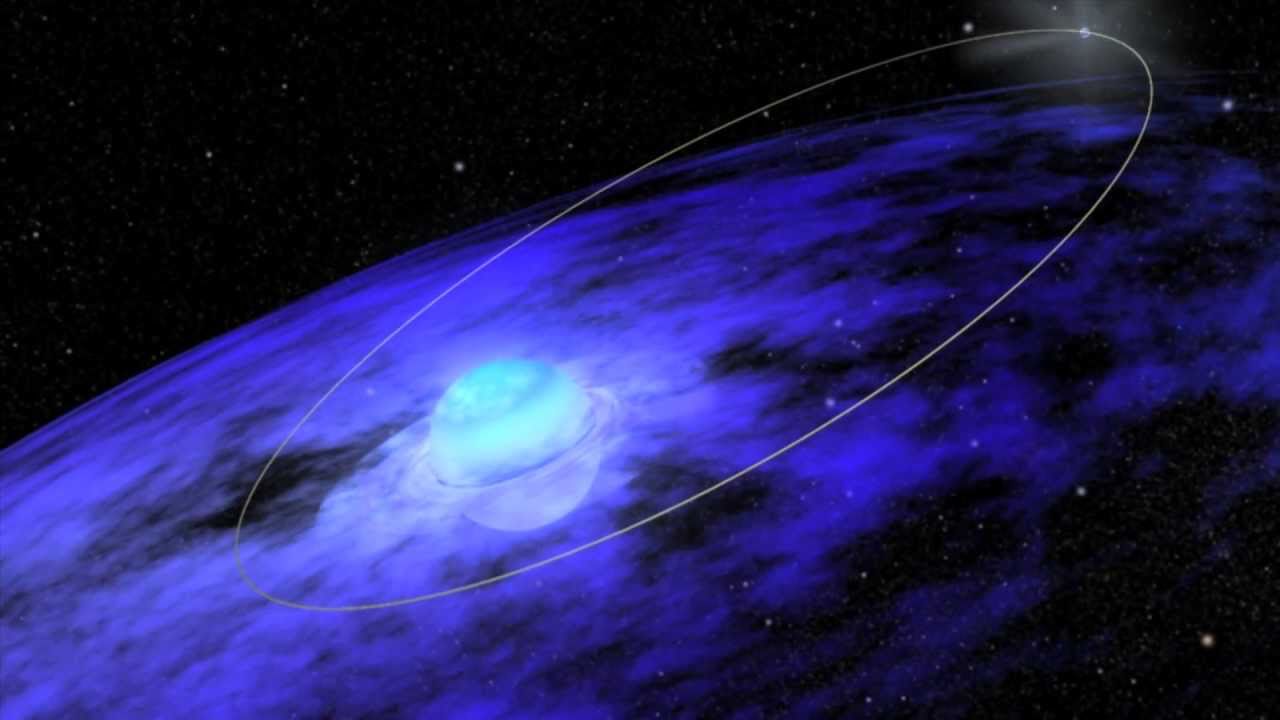From NASA Astrophysics and Goddard Space Flight Center. In December 2010, a pair of mismatched stars in the southern constellation Crux whisked past each other at a distance closer than Venus orbits the sun. The system possesses a so-far unique blend of a hot and massive star with a compact fast-spinning pulsar. The pair’s closest encounters occur every 3.4 years and each is marked by a sharp increase in gamma rays, the most extreme form of light.
The unique combination of stars, the long wait between close approaches, and periods of intense gamma-ray emission make this system irresistible to astrophysicists. Now, a team using NASA’s Fermi Gamma-ray Space Telescope to observe the 2010 encounter reports that the system displayed fascinating and unanticipated activity.
Every 3.4 years, pulsar B1259-63 dives twice through the gas disk surrounding the massive blue star it orbits. With each pass, it produces gamma rays. During the most recent event, NASA’s Fermi observed that the pulsar’s gamma-ray flare was much more intense the second time it plunged through the disk. Astronomers don’t yet know why.
Few pairings in astronomy are as peculiar as high-mass binaries, where a hot blue-white star many times the sun’s mass and temperature is joined by a compact companion no bigger than Earth — and likely much smaller. Depending on the system, this companion may be a burned-out star known as a white dwarf, a city-sized remnant called a neutron star (also known as a pulsar) or, most exotically, a black hole.
Just four of these “odd couple” binaries were known to produce gamma rays, but in only one of them did astronomers know the nature of the compact object. That binary consists of a pulsar designated PSR B1259-63 and a 10th-magnitude Be-type star known as LS 2883. The pair lies 8,000 light-years away.
The pulsar is a fast-spinning neutron star with a strong magnetic field. This combination powers a lighthouse-like beam of energy, which astronomers can easily locate if the beam happens to sweep toward Earth. The beam from PSR B1259-63 was discovered in 1989 by the Parkes radio telescope in Australia. The neutron star is about the size of Washington, D.C., weighs about twice the sun’s mass, and spins almost 21 times a second.
The pulsar follows an eccentric and steeply inclined orbit around LS 2883, which weighs roughly 24 solar masses and spans about nine times its size. This hot blue star sits embedded in a disk of gas that flows out from its equatorial region.
At closest approach, the pulsar passes less than 63 million miles from its star — so close that it skirts the gas disk around the star’s middle. The pulsar punches through the disk on the inbound leg of its orbit. Then it swings around the star at closest approach and plunges through the disk again on the way out.

